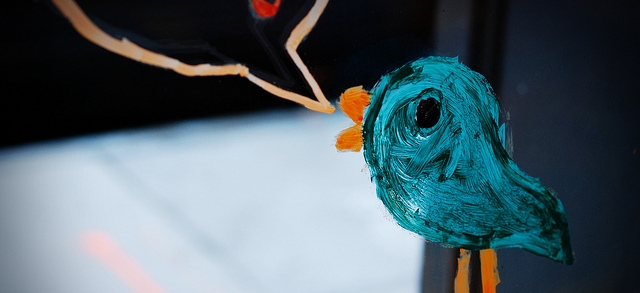Quick Tip Wednesday: How to Set Up a Gratitude Month
Welcome back to Quick Tip Wednesday!

"Twitter PD: Connecting teachers from diverse backgrounds; fostering to-the-point, meaningful discussions; creating #s to unify communities." -This article in 140, Twitter-ready characters
Many educators and administrators have embraced Twitter as a useful professional development tool. Modern day teacher workshops offer tips on building your PLN with Twitter, or hosting and participating in #edchats. It's attracted a wider user base than traditional blogging, and has surpassed Facebook or LinkedIn when it comes to teachers meeting virtual colleagues. We've accepted Twitter as a new tool in our educator toolbox--but what is it about the simple platform that makes it so conducive to teacher professional development?
Being a follower isn't necessarily what first comes to mind when thinking about professional development. However, following on Twitter gives educators access to leaders--and their ideas. Following allows you to select the kind of content you want to see, from the people you want to hear from. And it's a great way to make a connection without a formal introduction. Love what that fourth grade teacher in Texas has to say about incorporating iPads in the classroom? Follow her to stay-up-to-date on her new content, and tag her to share your own ideas.
Teachers can also connect through weekly group chats. These conversations can branch off into one-on-one conversations by tagging an individual participant. It's like attending a workshop and being able to chat directly and immediately with educators you found inspiring, or made a connection with.
Teaching is a collective activity: it doesn't take place in a vacuum. Arguably more so than any other field, education thrives on networking and collaboration. Twitter is just one more way for teachers to make connections, independent of their location or district resources.
"A Tweeter? What's that!?" When Twitter was first introduced, critics found the platform to be useless--full of needless personal updates, a Facebook without it's bells and whistles, a platform primarily for self-absorbed teens and tweens. And really, how much meaningful conversation can take place in just a few words? As Twitter's popularity grew, so did the diversity of it's fanbase. Former skeptics saw the value in paring down responses, getting to the "core" of a message. One former Twitter skeptic decided to try out the platform, asking for feedback on how teachers could use Twitter in education. He received "suggestions including using Twitter as an emergency-response system, to publish school announcements, and to post ideas for enrichment activities after school. Getting fast feedback from people with diverse perspectives [was appealing]."
Teachers use Twitter for a number of different reasons. Some districts use Twitter as a way to connect with staff and the larger community: sharing stories of learning and praise for their educators, or communicating important information like unexpected school closings. Other teachers use the platform independently of their districts, participating in edchats, seeking advice, or looking for the latest cutting-edge technology for their classrooms. Getting the most out of Twitter starts with identifying your personal PD goals. If you're interested in learning more about educational technology, there's a chat for that. Want to start a "classroom without borders" and connect with a school halfway across the world? Tweet it! Because there's so much content on Twitter (including funny memes you might accidentally find yourself scrolling through for hours), it's helpful to narrow in on your goals, and become familiar with how to use the platform to find information and connect with others.
Want more? Check out our resource on how to stay connected with Twitter and other online platforms or get connected with the 10 Twitter Chats for Educators.Let us know how you use Twitter for professional development in the comments below!
Image attribution
Site: flickr.com [Image 1]
.png)
Welcome back to Quick Tip Wednesday!

Mid-Year Reflection: Your Secret to a Stronger Second Semester
A great way to get your learners engaged in your Alludo program is by keeping the content in your program up-to-date and relevant. Rebecca has...